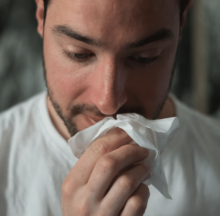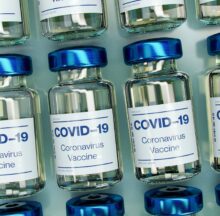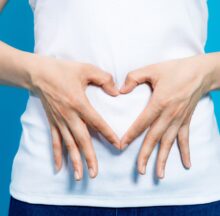Osteoporosis is a painful, crippling disease
Osteoporosis is a painful, crippling disease characterized by low bone density, but it is both preventable and treatable. Osteoporosis occurs when not enough new bone is formed or too much bone is lost, or both, and therefore bone is brittle, weak and more likely to fracture. Osteoporosis is often called “the silent disease” because it can progress painlessly until a strain or fall causes a bone to fracture, and many times people don’t know they have the problem until the first fracture occurs.
Bone is not a hard and lifeless structure; it is complex, living tissue. Bones provide structural support for muscles, protect vital organs, and store calcium which is essential for bone density and strength.
Signs and symptoms of osteoporosis include:
- Pain in the back, ribs and abdomen.
- Loss of height is normal as people age, but is increased by osteoporosis.
- Fractures of the hip, spine and wrist, as well as ribs, humerus, and pelvis.
- Humped back, known as “Dowager’s Hump.”
Of the individuals who fracture a hip, one-half will be permanently disabled, and almost 20% will require long-term nursing care. One in five individuals with hip fractures die within one year, usually from complications such as pneumonia or blood clots in the lung related to either the fracture or subsequent surgery.
Osteoporosis affects approximately 25 million Americans and 250 million people worldwide, predominately women. Osteoporosis can strike at any age. Significant risk has been reported in people of all ethnic backgrounds. However, whites and Asians are more susceptible.
Menopause is a known risk factor for osteoporosis. Osteoporosis is most common in older women, occurring in about 25% of those over 60 years of age. Women who have either had their ovaries surgically removed before age 45 or undergone early menopause, without receiving hormone replacement therapy, are also more likely to develop osteoporosis. Other female risk factors are small body frame and excessively strenuous exercise that stops menstrual periods.
Additional risk factors for osteoporosis include:
- Family history of osteoporosis
- Smoking
- Excessive use of alcohol
- Low body weight (less than 127 lbs)
- Sedentary lifestyle
- Low dietary intake of calcium
- Use of corticosteroids, anticonvulsants, certain cancer treatments and aluminum-containing antacids
- Certain hormonal disorders such as hyperthyroidism, hyperparathyroidism and Cushing’s Disease
- Other diseases such as chronic liver and intestinal disorders
Prevention
Although there is no cure for osteoporosis, these steps may slow or stop its progression.
- Eat a balanced diet – Nutritious food is important in maintaining an appropriate weight, also a factor in preventing osteoporosis. Avoid caffeine and carbonated beverages which can cause calcium to be eliminated from the body.
- Exercise – Daily weight-bearing exercise helps to reduce bone mineral loss.
- Stop smoking and limit alcohol.
- Have bone density baseline testing in your 30’s and then every one to three years.
- Take quality nutritional supplements.
Testing & Diagnosis: Early Detection is Key
Specialized bone density tests can measure bone mineral density (BMD) in various sites of the body. Bone density testing is painless, noninvasive and safe. Test results can help you and your doctor decide the best course of action for your bone health.
A bone density test can:
- Detect osteoporosis before a fracture occurs
- Predict your chances of fracture in the future
- Determine your rate of bone loss and/or monitor the effects of treatment
Treatment
Customized Hormone Replacement Therapy (HRT) – Replacement of declining hormones slows the loss of bone and increases bone density, which helps to decrease the risk of fractures. Estrogen can prevent bone loss, and many practitioners report increased bone density following progesterone administration. Testosterone therapy may also be utilized to improve bone health. Thyroid hormone is required for normal bone remodeling to take place. If thyroid hormone is deficient, old bone that is not as strong and is abnormally thick tends to accumulate. However, excessive thyroid hormone may cause osteoporosis.
Calcium supplements, and other vitamins and minerals (including magnesium, manganese, folic acid, boron, zinc, strontium, copper, silicon, and vitamins A, B6, C, D, and K) are important to bone formation and maintenance.
Ask our health care professionals for more information.
© Storey Marketing. All rights reserved.





















